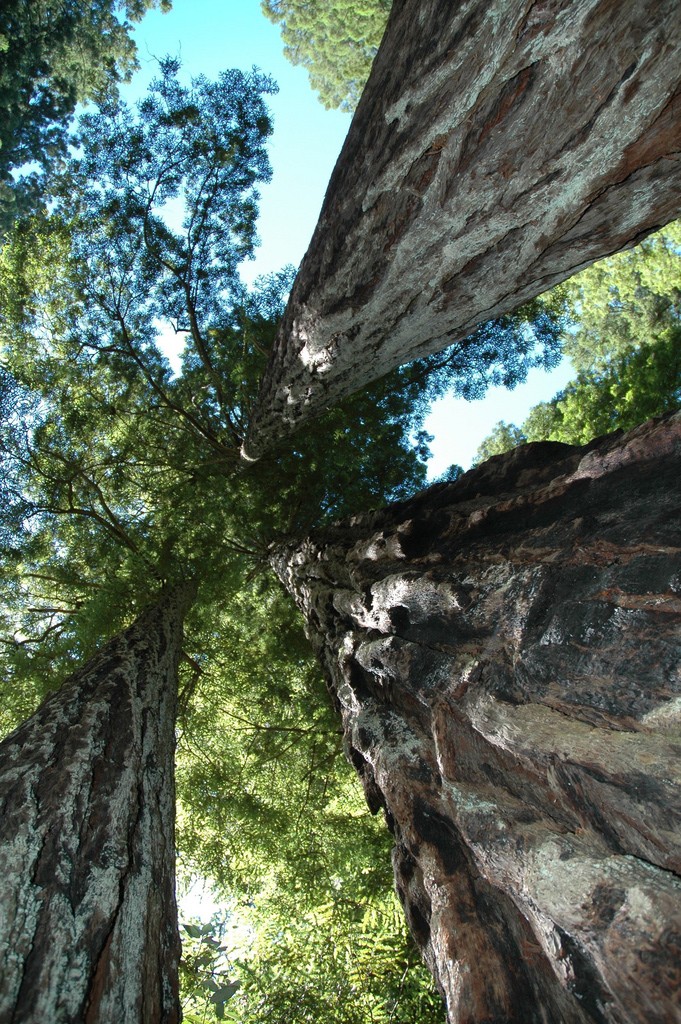By Katrina Marland
If you had asked me at age 10 what I wanted to do when I grew up, I doubt working at a forestry-focused nonprofit would have been part of my answer. If you asked again at age 18, I would have sworn that I was going to make a name for myself in Hollywood — behind the scenes, that is. Even in college, where I realized that I really wanted to write, it never occurred to me to do so for an environmental organization. So today, on my last day at American Forests, I can’t help but look back and laugh at the many things that shaped my path to bring me here — and the three in particular that made all the difference.
When I was a kid, I lived in what is still one of the smallest towns I’ve ever seen. Penryn, California, is home to only a few hundred people and is rural enough that there was little choice but to be close to nature. Our yard had this gnarled old tree, bent into an arch, with limbs that draped down to form a hollow in the middle. If I wiggled between the veil of branches, I would find myself inside this room of limbs that seemed to have grown just for me. It was big enough to stand in, to bring friends, even to camp out in a sleeping bag. There was a hollow in the trunk big enough to store books or toys. There was one sturdy branch towards the top with a bow in it, where I could sit, peek out from between the branches and watch the world. It was my favorite place and probably the reason that I often look at trees and wonder how the world looks from among their branches.
Penryn may have had some wonderful trees, but with so many farms, orchards and ranches nearby, there wasn’t a real forest to be seen. I just thought that a forest must be a whole bunch of trees like those near my home — interesting, but not particularly impressive. That changed on one summer vacation. I was immersed in a book in the car as we drove for hours, not paying attention to where we were going. The car stopped, we got out and I looked up … and up … and up. We were in Redwood National Park, and I was thunderstruck. I had never even seen buildings as tall as those trees, much less living things capable of such size. But it wasn’t just the trees. There were birds singing that I had never heard, unknown animals crawling across the ground and the air smelled different and alive. Young as I was, I got the distinct impression that these massive trees had created their own world here — and I was in awe of it.
Years later, in high school, I found myself with the choice of several classes to satisfy a science requirement. My dad, an environmental engineer, suggested an environmental science course, and I agreed, thinking that if it was difficult, I could get him to help me. As it turned out, I had never had a class I found so interesting. Learning the science behind things that I had seen my whole life, like forests and rivers and rain, was like learning the secrets behind a magic trick, and I couldn’t get enough of it. It was the first of several classes along the same track, and even though I didn’t make a career out of the science, I continue to be fascinated by environmental news and research — a field I have been lucky enough to immerse myself in for work as well as my own curiosity.
A single tree, a summer vacation and a high school science class — probably more than anything else, these are the things that brought me here. They taught me appreciation for the experiences that the natural world can give us, respect for what it is capable of and an enduring desire to know how and why things work they way they do. These — combined with my own talents — made it all but inevitable for me to end up at American Forests, where I could use my set of skills to help others learn more about the environment and hopefully inspire the same awareness of its value that I have found. If even one post of mine has made someone stop and think, “Wow, I didn’t know that nature could do that,” then I am well satisfied.
Thanks for reading, and I wish you all the best.
